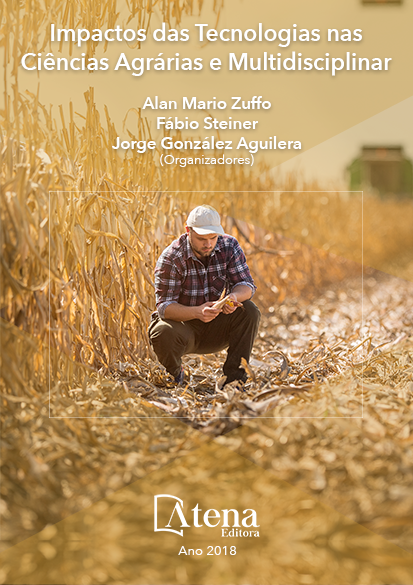
QUALIDADE QUÍMICA DE NEOSSOLO QUARTZARÊNICO SOB DIFERENTES USOS AGRÍCOLAS NA REGIÃO DE TERESINA, PI
O objetivo do estudo foi avaliar
a qualidade química de um Neossolo
Quartzarênico cultivado sob diferentes usos
agrícolas e sistemas de manejo na região de
Teresina, Piauí. Foi utilizado o delineamento
experimental inteiramente casualizado em
esquema fatorial 5 x 3 com três repetições, sendo
o primeiro fator composto por cinco sistemas de
uso: (i) cajucultura; (ii) citricultura por mais de
15 anos; (iii) consórcio de milho com feijão de
4 anos; (iv) mandiocultura de 4 anos e (v) mata
nativa. O segundo fator foi à profundidade do
solo: 0 - 0,10 m; 0,10 - 0,20 m e 0,20 - 0,40
m. Foram analisadas as seguintes variáveis
químicas: pH em água; K+, Ca2+, Mg2+, Al3+, e
H+Al. Foi calculada a percentagem de saturação
por bases (V), percentagem de saturação por
alumínio (m) e capacidade de troca de cátions
(CTC) efetiva e potencial. Maiores valores de
pH ocorreram nas áreas cultivadas com caju,
cítros e consórcio milho e feijão. Nestas últimas
duas áreas verificaram-se maiores valores de
SB e V. Maiores valores destas variáveis foram
verificadas nas duas primeiras profundidades
estudadas. A CTC efetiva foi maior nas áreas
sob citricultura, consórcio de milho e feijão e
mandiocultura. Dentre os sistemas de uso do
solo, o cultivo com citricultura e consórcio de
milho e feijão contribui para elevar os teores de
nutrientes em relação aos demais sistemas de
uso do solo.
QUALIDADE QUÍMICA DE NEOSSOLO QUARTZARÊNICO SOB DIFERENTES USOS AGRÍCOLAS NA REGIÃO DE TERESINA, PI
-
DOI: Atena
-
Palavras-chave: Atributos químicos do solo; solos arenosos; sistemas de cultivo, agricultura familiar.
-
Keywords: Soil chemical attributes; sandy soils; farming systems; family farming.
-
Abstract:
The objective of the study was to evaluate the chemical quality of a Typic
Quartzipsamment cultivated under different agricultural uses and management systems
in the region of Teresina, Piauí. The experimental design was completely randomized
in a 5 x 3 factorial scheme with three replicates, the first factor being composed of five
systems of use: (i) cashew; (ii) citriculture for more than 15 years; (iii) corn and beans
consortium of 4 years; (iv) 4 year old mandioculture and (v) native forest. The second
factor was the soil depth: 0 -0.10 m; 0.10 - 0.20 m and 0.20 - 0.40 m. The following
chemical variables were analyzed: pH in water; K+, Ca2+, Mg2+, Al3+, and H + Al. The
percentage of saturation by bases (V), percentage of saturation by aluminum (m) and
cation exchange capacity (CTC) was calculated. The highest values of pH occurred
in the cultivated areas with cashew, citrus and maize and bean intercrop. In these last
two areas we verified the highest values of SB and V. Higher values of these variables
were verified in the first two depths studied. Effective CTC was higher in areas under
citrus, maize and bean and mandioculture consortia. Among the land use systems,
citrus cultivation and corn and bean consortium contributes to increase nutrient content
in relation to other soil use systems.
-
Número de páginas: 15
- Iara Oliveira Fernandes


